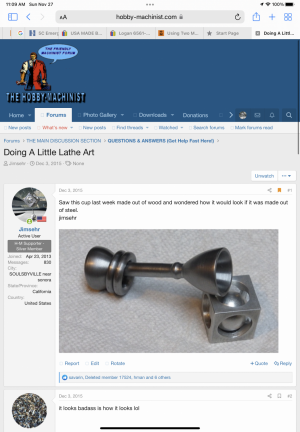- Joined
- Feb 28, 2019
- Messages
- 499
I have on more than one occasion wanted to machine a complex 2d curve profile. The most general case is a curve that has both convex and concave components. But either concave or convex non-circular curves also apply.
These are the kinds of things you would do with a pin router or following a template with a router if you were working with wood.
I have done convex curves with lots of straight cuts to approximate the curve. This works but is slow and time consuming, perhaps there is a better way?
For convex curves, I can imagine using a boring head or fly cutter and determining a number of circular cuts that would approximate the internal curve.
In both cases the result is something that will still need some hand work to smooth out or something that is approximate depending on how accurate you need to match a given curve and much fussing you are willing to do to get there.
One could also just make a long list of points to hit in order and do a painfully slow manual CNC job. I imagine that there are / were specialized machines that could do this prior to everything being CNC.
My question is: is there a general solution to this kind of task that's (relatively) efficient or some affordable or relatively easy to make shop fixture that can accomplish this?
These are the kinds of things you would do with a pin router or following a template with a router if you were working with wood.
I have done convex curves with lots of straight cuts to approximate the curve. This works but is slow and time consuming, perhaps there is a better way?
For convex curves, I can imagine using a boring head or fly cutter and determining a number of circular cuts that would approximate the internal curve.
In both cases the result is something that will still need some hand work to smooth out or something that is approximate depending on how accurate you need to match a given curve and much fussing you are willing to do to get there.
One could also just make a long list of points to hit in order and do a painfully slow manual CNC job. I imagine that there are / were specialized machines that could do this prior to everything being CNC.
My question is: is there a general solution to this kind of task that's (relatively) efficient or some affordable or relatively easy to make shop fixture that can accomplish this?



